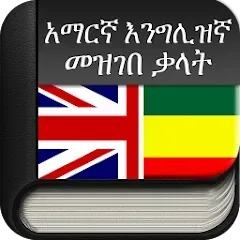Amharic, the official language of Ethiopia, is spoken by millions of people around the world. However, due to its unique script and structure, translating Amharic to English or vice versa can be challenging for those unfamiliar with the language. The advent of translation apps has made this process more seamless. In this article, we’ll explore the features, pros and cons, and how to effectively use an Amharic to English translation app.
Features of the Amharic to English Translation App
- Real-time Translation: Offers instant translation from Amharic to English and vice versa, helping users communicate efficiently.
- Voice Recognition: Allows users to speak in Amharic or English, with the app translating the spoken words into the desired language.
- Text Input: Supports typing in both Amharic and English, translating written words or sentences instantly.
- Offline Mode: Some apps offer offline functionality, enabling users to translate text without an internet connection.
- Dictionary Integration: Provides detailed meanings and explanations of words, improving vocabulary understanding in both languages.
- Amharic Script Support: Handles the unique Amharic script, which differs from the Latin alphabet used in English.
- Phrasebook: Includes common phrases in both languages, making it easier for beginners to communicate in everyday situations.
- Language Learning Features: Some apps offer language learning tools to help users get better at Amharic or English.
Pros & Cons of the Amharic to English Translation App
- Pros:
- Ease of Use: Most apps have user-friendly interfaces, allowing even beginners to navigate easily.
- Convenience: Enables users to translate on-the-go, facilitating communication in various contexts such as travel, work, or education.
- Cost-effective: Many translation apps are available for free or at low cost, compared to hiring a human translator.
- Improved Communication: Eliminates language barriers between Amharic and English speakers, fostering better understanding.
- Learning Aid: Helps language learners by offering immediate feedback on translations and phrases.
- Cons:
- Accuracy Issues: Automated translations may not always be 100% accurate, especially with complex sentences or idiomatic expressions.
- Limited Cultural Context: The app may miss the cultural nuances of language, leading to misinterpretation.
- Pronunciation Challenges: While apps may translate text well, they might not provide accurate pronunciation guides for all words.
- Dependence on Internet: Apps without offline mode can be unusable in areas with no internet connection.
- Text Input Limitations: Some apps may struggle with longer texts, leading to incomplete or incorrect translations.
Functions of the Amharic to English Translation App
- Instant Translation: Allows users to type or speak in Amharic or English and get real-time translation.
- Dictionary Lookup: Provides detailed definitions and explanations of words, aiding language comprehension.
- Phrasebook: Offers commonly used phrases for everyday conversation, especially for travelers or language learners.
- Voice Input: Users can speak in either language, and the app will translate spoken words or sentences.
- Offline Translation: Certain apps allow users to download language packs and translate without internet access.
- Language Learning: Assists users in learning the basics of Amharic or English, with tools such as flashcards, quizzes, or lessons.
How to Use the Amharic to English Translation App
- Step 1: Download the app from your device’s app store, whether on iOS or Android.
- Step 2: Open the app and set the languages: select Amharic as the source language and English as the target language, or vice versa.
- Step 3: Choose your input method. You can either type in the text box or use the voice recognition feature to speak your words.
- Step 4: Tap the translate button. The app will provide a translation of the typed or spoken content in your selected language.
- Step 5: For offline usage, go to the settings and download the offline language packs. This ensures translations work without internet access.
- Step 6: Use additional features such as the phrasebook or dictionary to enhance your understanding of both languages.
- Step 7: For learning purposes, access the language learning section, where you may find flashcards, quizzes, or basic language lessons.
